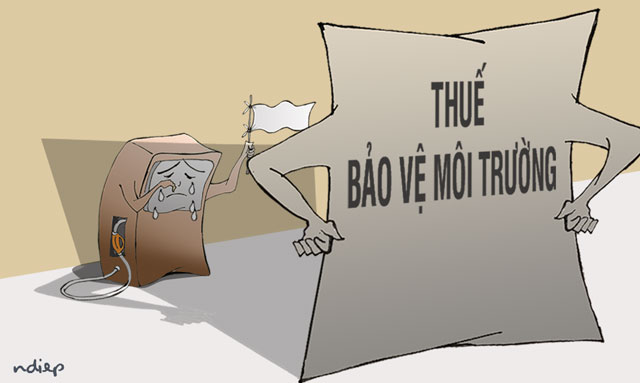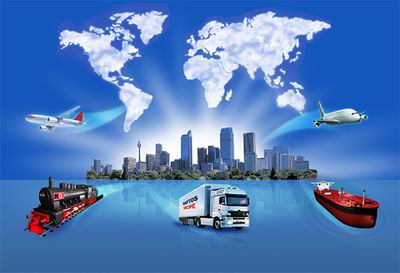Environmental protection in Vietnam has always been determined as a major policy, a significant task of the Communist Party of Vietnam and the State. Article 43 of the 2013 Constitution stipulates that everyone has the right to live in a healthy environment and must protect the environment.
Resolution No. 41-NQ/TW dated November 15, 2004, by the Politburo clearly states the viewpoint on environmental protection in the period of accelerating industrialization and modernization of the country as follows: “Environmental protection is one of the existential issues of humanity; it is a factor ensuring the health and quality of life of the people; it significantly contributes to socio-economic development, political stability, national security, and promotes international economic integration...”. However, economic benefits are always the primary concern of production, business, and service establishments. For economic benefits, producers may be willing to exhaustively exploit natural resources or skip necessary costs for reducing and treating waste from their operations to achieve the highest profit margins. In the field of environmental protection, the use of economic tools in general, including the application of environmental taxes, holds significant importance and effectiveness. Based on the importance of environmental taxes in environmental protection, the article focuses on some theoretical issues on environmental taxes and comments on some provisions of the Vietnam Environmental Protection Tax Law 2010.
1. Environmental Tax – An Important Economic Tool in Environmental Protection in Vietnam
1.1. Concept and Characteristics of Environmental Tax
Clause 1, Article 3 of the Law on Environmental Protection 2014 stipulates: “The environment is a system of natural and artificial material factors that affect the existence and development of humans and organisms.” The environment plays an extremely important role for humans and organisms. Recently, economic growth, rapid industrialization, and urban development have negatively impacted the ecological environment, such as the increase in waste, industrial wastewater, and household waste; an increase in the amount of solid waste in both living and industrial sectors; an increase in the emission of pollutants from both industrial production processes and the use of polluting products; pollution is increasingly escalating both on the ground, underground, in water, and in the air. Therefore, it is entirely necessary and urgent to introduce measures aimed at environmental protection. Various measures can be used to protect the environment, including the use of economic tools. It can be understood that using economic tools in environmental protection means using material benefits to stimulate entities to engage in environmentally beneficial activities for the community.
In Vietnam, the legal codification of economic tools in environmental management has begun to be implemented, though not extensively. The Law on Environmental Protection 2005 allocates about 10 articles on financial measures related to this field, including regulations on environmental taxes, environmental deposits, environmental protection fees, State financial support measures (tax exemptions, reductions, or subsidies for products recycled from waste, etc.). Based on this, the Law on Environmental Protection 2014 also has provisions on preferential treatment, support for environmental protection, environmental protection fees, resource taxes, environmental rehabilitation deposits, biodiversity compensation, environmental damage compensation, and other measures to protect resources and the environment. These measures have created the necessary economic motivation, changing the behaviors of waste-generating entities, encouraging them to recycle and use waste to save resources and reduce environmental pollution risks in their operations. One of the economic tools in the field of environmental protection that cannot be overlooked is the environmental tax. Compared to some countries worldwide, environmental tax is still a fairly new economic tool in Vietnam. The Law on Environmental Protection 2005 is the first legal document to stipulate this type of tax. Article 112 stipulates: “Organizations, households, and individuals producing or trading certain products that have long-term adverse impacts on the environment and human health must pay environmental taxes.”
In legal science, environmental tax can be understood as a type of tax issued by the state, levied on products, goods, and services that, when used, have adverse effects on the environment. Clause 1, Article 2 of the Environmental Protection Tax Law 2010 defines: "Environmental protection tax is an indirect tax levied on products and goods (hereinafter referred to as goods) that, when used, have adverse effects on the environment." Thus, in Vietnam, the environmental tax is referred to as “environmental protection tax.” Environmental protection tax is one of the taxes issued by the state, so it also shares the common characteristics of taxes such as mandatory nature; and association with state power elements; and it does not entail consideration or direct return. Moreover, the environmental protection tax has the following distinctive features:
Firstly, environmental tax is an indirect tax. This means that the environmental tax is added to the product's selling price, thereby shifting the tax burden from the business producer – the taxpayer – to the consumer.
Secondly, the subjects of environmental protection tax liability have distinct characteristics. The subjects of environmental tax liability are products whose production, business, and consumption cause long-term environmental harm (when used in the production, consumption, or disposal process). The term product here includes goods and services. According to the definition of environmental protection tax in Clause 1, Article 2 of the Environmental Protection Tax Law 2010, the taxable subjects are only goods, not including services, and are only taxable when their use adversely affects the environment.
Thirdly, environmental tax is an important economic tool for the state to manage and protect the environment. Each country that issues the environmental tax has recognized the importance of current environmental protection issues. The obligation to pay taxes creates incentives for polluters to search for new methods to reduce pollution. Reducing environmental pollution is the goal of efforts to change behavior. Environmental tax is the most cost-effective tool in reducing environmental pollution compared to other administrative decisions.
Fourthly, environmental tax contributes to increasing state budget revenue, reducing the negative effects of the current income tax system. This means that if producers and consumers do not completely cease polluting activities, they will be taxed and obliged to pay taxes, thereby becoming a source of revenue for the budget. The nature of environmental tax is indirect, so it does not induce strong reactions from taxpayers because the tax collectors are simply acting on behalf of the state to collect from the taxable entities, who often do not realize they are bearing the tax burden. According to statistics, the revenue from environmental protection tax has steadily increased from 2012 to 2016 (total environmental protection tax revenue in 2012 was VND 11,160 billion, in 2013 it was VND 11,512 billion, in 2014 it was VND 11,970 billion, in 2015 it was VND 27,020 billion, in 2016 it was approximately VND 42,393 billion); accounting for about 1.5% - 4.1% of total state budget revenue and about 0.3% - 0.9% of annual GDP.
Environmental protection tax differs from environmental protection fees. Environmental protection fee is levied on waste discharge into the environment, both in production and consumption (levied on the waste dischargers causing environmental pollution from production and use as in the case of household wastewater fees). The fee payer and the fee collector for environmental protection are the waste discharge subjects (the same entity). Environmental protection fee is determined based on the principle of covering environmental pollution treatment costs. Meanwhile, environmental protection tax reflects the state's direction and regulation on the consumption of certain polluting products to limit their use. Environmental protection tax is levied on some goods that, when used, cause environmental pollution to limit production and consumption. Consumers bear the tax, but producers collect it on behalf of the state.
1.2. The Purpose of Environmental Tax
By directly impacting the economic interests of polluters, this tool changes their behavior towards benefiting the environment and reducing environmental pollution risks. Recognizing the important role of environmental tax, every state enacts it with the following purposes:
Firstly, to limit the use of products that have adverse effects on the environment; gradually transition to producing, trading, and consuming safe, environmentally friendly products that have less environmental impact, guiding the economy towards environmentally friendly development.
Secondly, to change people's attitudes towards the living environment, emphasizing the need to exploit resources economically, efficiently, and in an environmentally friendly manner; promoting voluntary environmental protection activities.
Thirdly, to encourage manufacturers to continuously innovate technology to minimize pollution. If environmental tax causes fuel prices to increase, it prompts research into new energy sources to meet increasing human demands, leading to the birth of new technologies and products.
Fourthly, environmental tax aims to achieve faster environmental protection efficiency than legal tools. In other words, by impacting the economic interests of entities involved in environmental management, the use of environmental tax ensures these entities comply with the law more effectively.
Fifthly, to create necessary financial resources, increasing state budget revenue for managing and protecting the environment. Environmental tax mobilizes financial resources for the state budget to meet state spending needs, including spending on managing and protecting the environment, facilitating better and more sustainable development, and generating state budget revenue.
1.3. The Role and Significance of Environmental Tax
It can be affirmed that environmental tax holds a particularly important role, especially in the current conditions where pollution and environmental degradation are increasingly urgent issues that need addressing by all nations worldwide, particularly developing and underdeveloped countries. The role and significance of environmental tax are as follows:
Environmental tax contributes to changing business and consumption behaviors towards benefiting the environment or, in other words, environmental tax plays a role in guiding production and consumption – manufacturing and importing "clean" goods. By directly impacting the economic interests of relevant entities, particularly polluters, environmental tax provisions will change their behaviors to benefit the environment. Polluters have every reason to reduce their waste output as long as the cost of doing so is lower than the environmental costs they have to pay. In the long term, in a market economy, economic tools in general, including environmental tax, can achieve more than what environmental standards require.
Environmental tax encourages proactivity and creativity in researching and applying appropriate technologies to minimize waste, thereby saving materials, reducing production costs, and improving business efficiency. This role of environmental tax is manifested in encouraging waste-generating entities to research and apply the most suitable technological procedures to minimize waste generation. Not all waste-generating entities have abundant financial resources. Small and cottage-scale industries often face many difficulties in this regard. Therefore, if the state manages through administrative orders by imposing specific technological devices that establishments must invest in to minimize waste, it may exceed the financial and technological capabilities of those establishments. Thus, environmental tax plays a role in positively adjusting the macro-economy, encouraging polluters to proactively choose optimal measures to reduce pollution, benefiting themselves while protecting the environment, stimulating industrial development, and enhancing research and development of "clean production."
Environmental tax also creates proactivity for production and business establishments during operations and actively responds to potential environmental incidents. The use of environmental tax has a role in that it encourages these entities to voluntarily implement precautionary and responsive measures, making them more proactive in minimizing adverse environmental impacts in case of incidents to safeguard their economic interests. Moreover, because environmental tax is levied on harmful goods that negatively impact the environment, environmental tax receives more social support.
Using economic tools in general, including environmental tax, plays a role in potentially reducing the management burden on state environmental protection authorities. Given the current environmental pressure, along with primarily administrative command management, state environmental protection agencies are often overwhelmed with work.
Instead of state management agencies constantly monitoring and supervising the implementation of administrative decisions imposed on business organizations and individuals, environmental tax compels these entities to voluntarily undertake environmentally beneficial actions. Their economic interests are closely tied to the environmental damage they may cause. Therefore, without frequent and rigorous supervision by state environmental protection agencies, these establishments voluntarily take measures to reduce pollution. Consequently, the management burden on state agencies is considerably reduced.
2. Comments on some provisions of the Vietnam Environmental Protection Tax Law 2010
Before 2010, Vietnam did not have a specific environmental protection tax to levy on goods that cause environmental pollution to limit their production and consumption. However, the Government of Vietnam had enacted and implemented many financial measures to encourage investors’ direct participation in pollution treatment activities, efficient resource use, and mobilize a part of the polluters’ contribution to environmental restoration. These measures were implemented through various taxes such as land tax, agricultural land use tax, resource tax, special consumption tax, corporate income tax, and through fees related to environmental activities such as: Environmental protection fee on wastewater, environmental protection fee on mineral exploitation, environmental protection fee on solid waste. Additionally, some tax policies like special consumption tax, corporate income tax, export tax, and import tax also provide incentives for environmental protection activities.
On one hand, the revenues from environmental protection fees have added to the budget, contributing a part to investment in resolving environmental issues, simultaneously changing organizations' and individuals' awareness and behavior in preserving the environment and raising community awareness about environmental protection. Tax incentives for the environmental sector have made businesses more conscious in finding methods to limit the negative impact of their production activities on the environment; focusing on applying advanced production technologies to reduce the discharge of harmful substances into the environment. This promotes businesses to research and apply clean technologies in production, study and use alternative raw materials instead of fossil fuels to produce environmentally friendly products, replacing polluting products.
However, the revenues from various environmental protection fees are still very limited due to these fees' low legal standing and rates, resulting in low impact and effectiveness. As for the previously mentioned tax policies, environmental protection is not the main objective; thus, encouraging investment in environmentally friendly product production, promoting investment in environmental cleanup projects, and not taxing or taxing at low rates for importing environmental protection-related products and equipment have somewhat contributed to environmental protection but have not directly impacted the behavior of consuming and producing products with adverse environmental impacts. Therefore, it is necessary to establish a specific environmental protection tax policy to levy polluted products, those whose use adversely affects the environment.
On November 15, 2010, the National Assembly passed the Environmental Protection Tax Law, effective from January 1, 2012. The law stipulates subjects to tax liability, non-tax liability subjects, taxpayers, tax calculation basis, tax declaration, tax calculation, tax payment, and tax refund for environmental protection. The enacted law plays an important role in creating a comprehensive, stable legal framework adjusting all negative environmental impact behaviors, enhancing society's environmental protection awareness, thereby contributing to changing organizations' and individuals' behavior, raising environmental protection awareness in investment, production, and consumption, addressing current tax policy limitations, creating financial resources to cover environmental protection costs, ensuring a balance between economic development and sustainable development, promoting energy-saving and efficient use.
2.1. Regarding taxable objects
Article 3 of the Environmental Protection Tax Law stipulates 08 taxable objects, including:
Firstly, fuels, oils, and lubricants: These products contain certain chemicals such as lead, sulfur... Even when not used, the substances contained in various fuels have already emitted into the environment and negatively impacted it. Taxing fuel products is aimed to encourage energy conservation and efficient use; and to promote the use of renewable energy.

Illustration (source: internet)
Secondly, coal: Coal used for combustion purposes will release gases such as CO2, SO2 into the environment, which negatively affect human health and environment. The use of coal is widespread; therefore, taxing coal aligns with the goals to encourage energy conservation, reduce dependence on fossil energy, and promote the use of renewable energy.
Thirdly, HCFC solution: This substance is used in several industrial sectors such as refrigeration and air conditioning. Emitting HCFC into the atmosphere pollutes the air and is a primary cause of ozone layer depletion and greenhouse effects. Vietnam has signed the Montreal Protocol to limit the use of ozone-depleting substances. Developing countries, including Vietnam, must completely eliminate the use of HCFC by 2030. Taxing HCFC solutions as part of the environmental protection tax will help fulfill Vietnam's Montreal Protocol commitment and encourage businesses to gradually reduce HCFC use by shifting production technology.
Organizations and individuals producing or importing HCFC solutions are required to declare and pay environmental protection tax. In reality, HCFC solution exists in mixed forms containing HCFC (e.g., Polyol mixed with HCFC-141, used for producing insulation panels; the HCFC proportion in Polyol mixed HCFC-141b ranges from 13% to 30%). However, the current Environmental Protection Tax Law does not specifically address whether mixed HCFC solutions are subject to tax. Although the Ministry of Finance has issued Official Letter No. 12128/BTC-CST dated September 1, 2015, guiding the collection of environmental protection tax on mixed HCFC solutions, a legal amendment to the Environmental Protection Tax Law is necessary to ensure a solid legal basis and avoid implementation issues.
Fourthly, taxable plastic bags: The Environmental Protection Tax Law stipulates in Clause 3, Article 2 as follows: “Taxable plastic bags are single-layer polyethylene film bags, technically known as foam plastic bags." These products either take a very long time to decompose (possibly up to hundreds of years) or cannot decompose naturally. Disposed foam plastic bags accumulate in the soil, deteriorating soil quality. Upon decomposition, they release substances that make the soil inert, unable to retain moisture and nutrients for crops. Currently, many countries globally impose taxes on plastic products like the United Kingdom, Ireland, Taiwan...; others ban the use of plastic bags in major cities like Beijing (China). Taxing foam plastic bags aims to raise societal awareness of environmental protection, influencing consumer behavior towards using eco-friendly alternatives. Nevertheless, the definition of taxable plastic bags remains broad, though further detailed in Decree No. 67/2011/ND-CP and No. 69/2012/ND-CP by the Government of Vietnam, which clarifies the understanding of taxable plastic bags and packaging for pre-packaged goods but does not address the recognition and criteria of environmentally friendly plastic bags, causing difficulties in tax calculation for enterprises and management agencies. Thus, supplementary regulations on this matter are necessary.
Fifthly, restricted-use herbicides
Sixthlyrestricted-use termiticides
Seventhly, restricted-use wood preservatives
Eighthly, restricted-use warehouse fumigants
Restricted-use herbicides, termiticides, wood preservatives, and warehouse fumigants are toxic compounds derived from natural or synthetic chemicals used for pest control on crops and agricultural produce preservation. Improper use and dosage harm the environment in various ways, such as releasing chemicals into the air during spraying or persisting in food, water, soil... Currently, proper use and dosage of plant protection chemicals are undervalued due to the relatively cheap prices of many products compared to agricultural produce. Taxing these restricted-use products aims to raise user awareness, encourage reduced dependency, and minimize the adverse effects of plant protection chemicals on the environment.
The 8 groups of commodities subject to environmental protection tax are essential, having widespread impacts in life. However, there are many commodities and products in practice whose use can pollute the environment but are not yet subject to environmental protection tax. Depending on the economic-social conditions each period, it is necessary to research the inclusion of certain services and additional products causing environmental pollution into the environmental protection tax scope based on the following principles: (i) Goods produced or imported that when used adversely affect the environment; (ii) Compliance with Vietnam's international commitments and international practices; (iii) Feasibility, economic harmony, and ensuring no adverse impact on the competitiveness of Vietnamese products, especially exported goods.
2.2. On Taxpayers
Taxpayers are defined in Article 5 of the Environmental Protection Tax Law: organizations, households, and individuals producing or importing goods under taxable items. Compared to Article 112 of the 2005 Law on Environmental Protection, the 2010 Environmental Protection Tax Law added the case of importing taxable goods, setting these importers as taxpayers. This provision is rational, meeting environmental protection goals, rectifying the shortcomings in the 2005 Law on Environmental Protection’s tax stipulations by filling the loophole where taxing only producers and businesses would lead to tax evasion through importing harmful products instead of producing them. Therefore, the taxpayer provision in the 2010 Environmental Protection Tax Law is appropriate.
Environmental protection tax is an indirect tax, its application aims to direct and alert consumers towards environmentally friendly goods and showcases state regulation, limiting the use of polluting products, thereby contributing to environmental protection, ensuring sustainable development as consumers themselves cause pollution through using harmful products. Hence, specifying taxpayers as those producing or importing taxable goods but shifting the tax burden to consumers (as it is included in product pricing) is reasonable, avoiding sharp consumer reactions.
2.3. On Tax Calculation Basis
Article 6 of the Environmental Protection Tax Law states: “The basis for calculating environmental protection tax is the taxable quantity of goods and the specific tax rate.”
The taxable quantity has been specified for each type of goods to match production characteristics, explicitly: For domestically produced goods, the taxable quantity is the quantity of goods sold, exchanged, used internally, gifted. For imported goods, the taxable quantity is the quantity of goods imported. Thus, the explicit stipulation facilitates and limits cost increases in environmental protection tax management.
Absolute tax rates are prescribed within a certain tax range specified by the Standing Committee of the National Assembly, varying by taxable item, as a monetary amount/unit of goods[1]. The law defining environmental protection tax with an absolute tax rate is justified. This method is the best, demonstrating simplicity, transparency in execution, allowing proactive product cost calculation and state budget collection without price fluctuation dependence. The absolute tax rate, stipulated within a tax range, is adaptable to actual conditions. However, an absolute tax rate's limitation is the implementation difficulty, especially in the market economy with unpredictable inflation, necessitating continuous tax rate adjustments to fit realities, complicating law enforcement.
2.4. On Tax Ranges and Specific Tax Amounts
The Environmental Protection Tax is a newly established tax. To facilitate smooth enforcement and policy implementation, the 2010 Environmental Protection Tax Law sets minimum and maximum absolute tax rates in a tax range for each taxable item, differentiating based on environmental impact level and preserving current policies (fuel fees, environmental protection fees) to prevent production, consumption disruptions, and tax management confusion. However, examining the tax range in Article 8 of the Environmental Protection Tax Law reveals some items with unconvincing tax rates; for instance, the wide gap between minimum and maximum rates may lead to inconsistent application for the same product by different enterprises in various locations. Some tax range provisions are also unreasonable, specifically:
For fuels:
The wide margin and the ceiling rate of 4,000 VND/liter are high, considering fuel prices already include many other taxes and fees. Reasonable adjustments are necessary to prevent significant impacts on people's livelihoods and product price fluctuations, influencing macroeconomic balance. Moreover, the tax rate for gasoline ranging from 1,000 – 4,000 VND/liter and diesel from 500 – 2,000 VND/liter is unreasonable since gasoline causes less environmental pollution when used, conflicting with the principle of setting tax rates based on environmental impact per item (“The tax rate for taxable goods is determined by the environmental impact level of the goods,” Clause 2 Article 8 of the Environmental Protection Tax Law).
For plastic bags:
The stipulated absolute tax rate is 30,000 – 50,000 VND/kg. In practice, however, the law lacks detailed environmental protection tax rates for different plastic bags. Tax officers, lacking technical expertise, may not differentiate and properly apply the 30,000 VND/kg or 50,000 VND/kg tax rates, leading to arbitrary application or potential negatives in tax calculation. Moreover, the tax rate is relatively low, inadequate to significantly influence user behavior. Therefore, adjusting the tax range for plastic bags to ensure reduced usage and promoting environmental protection is necessary.
Currently, many countries impose high environmental protection taxes or ban the production, sale, and use of plastic bags. Specifically: UK: 15 cents/bag (~4,500 VND/bag); Ireland: 15 cents/bag (~4,500 VND/bag); Hong Kong: 0.05 USD/bag (~1,050 VND/bag); Estonia is considering a 2 kroons/bag tax (~3,000 VND/bag). Some countries ban producing, selling, using thin plastic bags, for example, China bans plastic bags thinner than 0.025mm.
Thus, Vietnam's environmental protection tax range and rates for plastic bags are low compared to global standards, insufficient to significantly deter production and use.
2.5. On Tax Refund
Article 11 of the 2010 Environmental Protection Tax Law stipulates tax refund for paid environmental protection tax in the following cases:
- Imported goods stored in warehouses or yards at ports, under customs supervision, being re-exported abroad;- Imported goods sold to foreign countries through agents in Vietnam; fuels sold to foreign transport vehicles on routes through Vietnamese ports or Vietnamese transport vehicles on international routes as per legal regulations;- Goods temporarily imported for re-export under temporary import-re-export trading methods;- Goods imported by importers for re-export abroad;- Goods temporarily imported for exhibitions, expositions, product introduction under legal regulations, re-exported abroad.
These specific provisions are rational, ensuring taxpayer benefits.
Apart from primary contents, the Environmental Protection Tax Law also covers tax timing, declaration, calculation, payment… as per tax management law. However, the law lacks provisions on tax incentives (exemptions, reductions) as other tax laws emphasize. Tax incentives provisions encourage environmentally responsible production, adoption of advanced, cleaner production technologies, reducing harmful emissions, and fostering the creation of eco-friendlier products.
The Environmental Protection Tax Law enacted by the National Assembly, implemented in practice, creates a consistent, stable legal framework, a necessity in current conditions. Over nearly 5 years of implementation, the law has enhanced societal responsibility and awareness for environmental protection; encouraged the production and consumption of eco-friendly goods; supported sustainable economic development; incentivized growth while reducing environmental pollution; reflecting progress in legislative and policy-making thoughts on environmental protection in Vietnam. Nonetheless, the Law has some limitations and challenges as discussed, necessitating amendments and supplements[2].
Resolution No. 41-NQ/TW dated November 15, 2004, of the Politburo clearly states the environmental protection stance in the accelerating industrialization and modernization phase: “Environmental protection is a vital issue for humanity; a factor ensuring public health and life quality; significantly contributes to socio-economic development, political stability, national security, and promotes international economic integration...”. However, economic benefits remain the top concern for businesses. For economic gains, manufacturers might fully exploit natural resources or neglect necessary waste reduction and treatment costs, aiming for maximum profits. In environmental protection, applying economic tools like environmental taxes has significant implications and effectiveness. Considering environmental taxes’ importance in environmental protection, this article discusses theoretical aspects of environmental tax and comments on certain provisions of the Vietnam Environmental Protection Tax Law 2010.
Source: Ministry of Justice
 Article table of contents
Article table of contents










.Medium.png)
.Medium.png)
.Medium.png)
.Medium.png)
